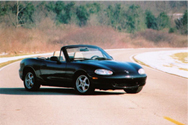When buying a pre-owned car, we strongly advise our clients to take the necessary precautions to ensure that they do not get ripped off and/or buy a lemon.
Note: When a car has reached its 10th birthday, the COE must be renewed to allow for continued use of the car. This renewal can take place every 10 years as long as the vehicle is roadworthy. If however, the owner of the car opts to renew the COE for 5 years only, then that will be last time renewal will be allowed for that particular car. (Strange, but true!)
Here are some useful tips when looking for a pre-owned car:
- Do your homework. Many cars out there have a “market rate” whereby an approximate value can be worked out based on market depreciation rates.
- Develop a list of questions and carry it with you so that you will not leave anything out.
- Do not succumb to hard-sell tactics and heavy discounting. It usually means that the seller is desperate, has marked up his price too high or something is wrong with the car.
- Before signing on the dotted line, make sure you have a look at the car’s papers including the log card (registration card), service history, etc.
- If possible, try to ascertain the accuracy of the odometer reading (mileage) by reading the service history.
- Do not rely solely on a vehicle’s annual roadworthiness inspection certificate as proof of quality. It usually does not tell the whole story about the car.
- Check that the vehicle’s badge matches the details stated in the registration documentation.
- You can conduct an initial physical “assessment” of the vehicle:
- Check out the body work. Is there any evidence that the vehicle’s body has been damaged, for example, uneven gaps between doors, uneven welding or noticeable repair work at the front (within the engine bay) and at the rear (in the boot under the boot lining).
- Does the colour on all the panels match?
- Check for uneven paint surfaces, paint/rust bubbles.
- Check the condition of the tyres for uneven wear, adequate tread depth and sidewall damage. Uneven tyre wear can be a sign of a car that needs alignment or worse, has been badly damaged in a collision.
- Check all switches and electronic systems, for example, power windows (all switches), central locking, lighting even the horn.
- Check that the vehicle entertainment system works and is included in the sale price (some owners would like to retain their precious hi-fi components).
- Check under the bonnet and look for damaged or cracked hoses, oil leaks and the general state of the engine bay.
- If the seller claims recent repairs have been done, ask to look at the receipts. If he claims that a warranty for the work is available, ask to see that too.
- Check out the seatbelts, upholstery, pedals, etc, for wear and tear. It is always interesting to check to see if the condition of these items corresponds with the claimed mileage of the car.
- Check rubber linings of the doors, boot, sun-roof for any signs of leakage or deterioration.
- ALWAYS ASK FOR A TEST DRIVE (and make sure you/the dealer has the necessary insurance coverage). If the owner/dealer is reluctant, something could be amiss.
- Before test driving, start the car, let it idle and observe if idling is even. Open the bonnet and have a listen for anything that might sound unusual.
- Choose a route that tests the car over a variety of conditions including start-stop traffic, expressway driving and some windy roads.
- When driving, listen for unusual sounds, rattles, squeaks, etc.
- On a straight road, check overall directional stability of the car.
- Find a safe spot to test the brakes in a sudden braking situation.
- Monitor the water temperature by observing the water temperature gauge.
- After the test drive, open the bonnet and check for any signs of leakage. Also peer underneath the car for any possible leaks.
Note: FussFree Auto suggests that anyone who is considering buying a pre-owned car to get the prospective car assessed by a qualified evaluator. Even then, buyers should be aware that this does not guarantee the car will be trouble-free.





